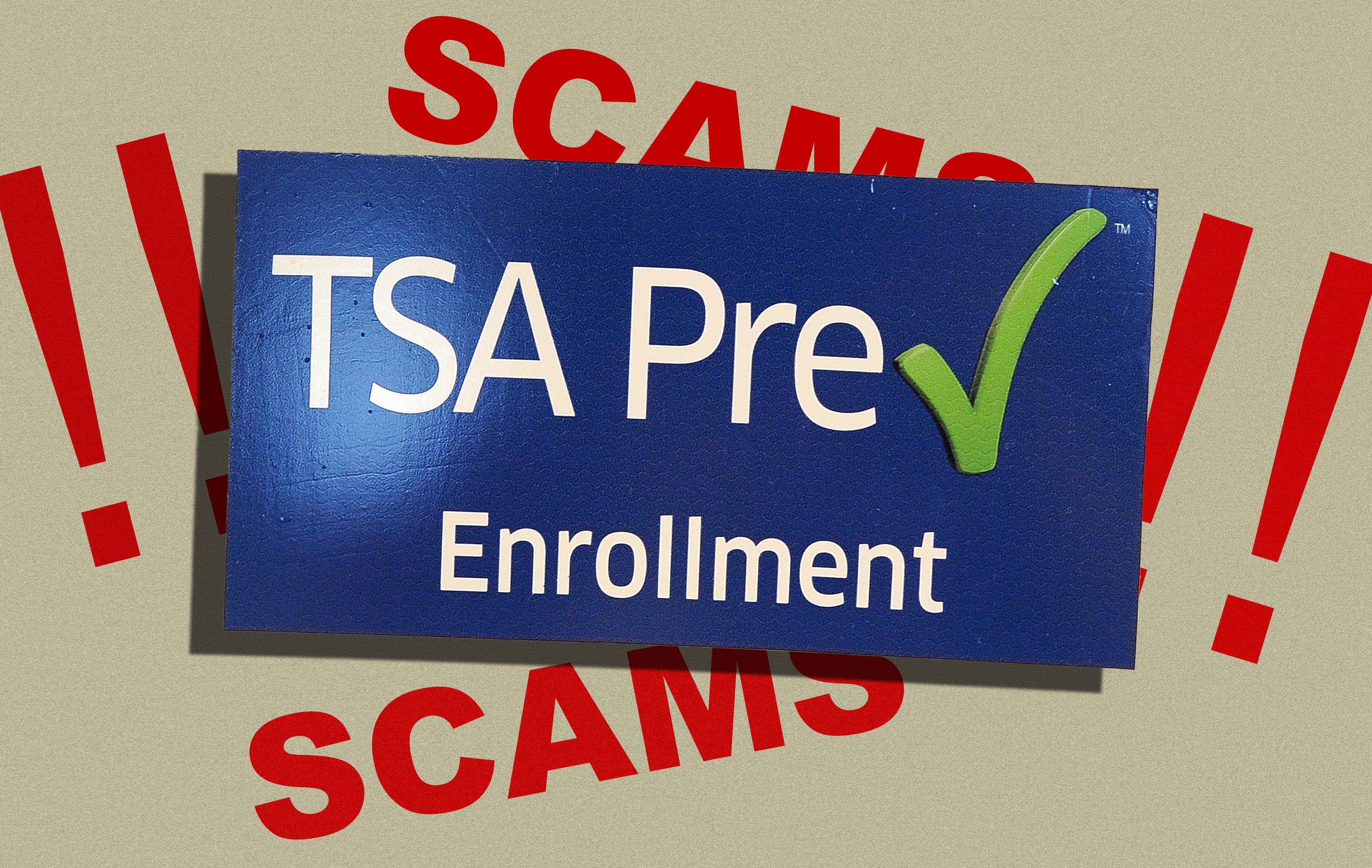This TSA PreCheck Scam Could Steal Your Money. Here’s How To Spot It.

In a busy airport, every minute can mean the difference between making or missing your flight ― and TSA PreCheck has become the go-to way that travelers in U.S. airports can speed through airport security lines. According to the Transportation Security Administration, PreCheck ― which has separate and usually shorter security lines ― is available in more than 200 airports across the nation.
But if you are ready to “enroll” or “renew” your TSA PreCheck, know this ― it can be too easy to get fooled into paying more than you should, especially when the link looks legitimate.
Advertisement
Too many of us end up getting scammed by government impersonators that use official-sounding language. The Federal Trade Commission reported that consumers lost $76 million when paying cash to government impersonation fraudsters in 2023, up from $40 million in 2022. In fact, last week the FTC issued an alert warning consumers to be on guard for TSA PreCheck scams in particular, noting that “only a scammer will ask you to pay online to enroll” in TSA PreCheck.
The Biggest Red Flags Of A TSA PreCheck Scam
When you are first applying to be approved for PreCheck, you do actually need to complete an online form ― but it’s a big red flag if a website says you can complete and pay for it online.
That’s because travelers who are applying for TSA PreCheck for the first time cannot pay the application fee online and should not be asked to provide payment information like your credit card number. Instead, you will finish enrollment and do fingerprinting and documentation at a physical enrollment location.
Payment for first-time applicants “happens during the actual appointment,” said R. Carter Langston, the TSA press secretary. “They will charge a credit card or do a point of sale at that point, not before, and certainly not online.”
Advertisement
So if you are enrolling for PreCheck, your guard should be up if you get redirected to a website promising that you can do this whole process online. Do not click on unsolicited texts or emails urging you to enroll now for a limited-time offer. Scammers win when they get you to act fast, so you think less.
Consumers “should be very wary of any unsolicited communications like emails or text messages that request them to click on the link or provide sensitive personal information,” said Michael Jabbara, the senior vice president and global head of fraud services for Visa.
To be safer, type in the official website for TSA PreCheck when enrolling. You can start your application by going to: tsa.gov/precheck.
There are deceptive renewal practices as well. Your TSA PreCheck membership lasts five years before needing to be renewed. The real TSA does send legitimate renewal reminder emails to travelers, and unlike first-time enrollment, you can pay to do your renewal online. But it’s all too easy to get fooled by a spoofed website that looks legitimate but is actually fraudulent.
Know that official TSA PreCheck sites use .gov, not a .com web address.
“It is always important to look at the actual URL to ensure that you’re being directed or redirected to a site that ends in .gov. And that ensures that, at least for the TSA PreCheck, a trusted traveler program, that you’re basically paying the fee that the federal government has developed,” Langston said. “That fee is based on the administrative costs as well as the background check costs associated with the membership.“
Advertisement
As the FTC advises, “Start your renewal at tsa.gov/precheck instead of clicking a link.”
There are websites that can trick travelers into paying more than needed to as well. To avoid getting overcharged by a website claiming to be the best site to do your renewal, look up the official enrollment and renewal partners TSA uses. TSA has only three enrollment providers, and those are CLEAR, Idemia and Telos, and their prices are listed on TSA’s official website.
So You Got Fooled Into Paying More Than You Should…
TSA cannot refund PreCheck applications that were not done through them. That’s why “it’s so important that people go to the right place at the very beginning and aren’t duped into clicking on something that takes them to a non-.gov site,” Langston said.
If you do however pay for a fake TSA PreCheck program, you should report it to the FTC at ReportFraud.ftc.gov.
Your Support Has Never Been More Critical
Already contributed? Log in to hide these messages.
Jabbara also said you should contact your bank immediately and let them know that “you have either been charged fraudulently or that you have been scammed into giving away your payment information.”
If you have given sensitive information like your social security number or date of birth, he recommends contacting credit bureau agencies and freezing your credit.
Advertisement
Enrolling and renewing your legitimate TSA PreCheck membership should not take too long. TSA claims it can take as little as five minutes to renew online. Take a few extra more minutes to ensure you are not falling for a spoofing scheme that will be a costly headache to ignore.

Comments are closed.